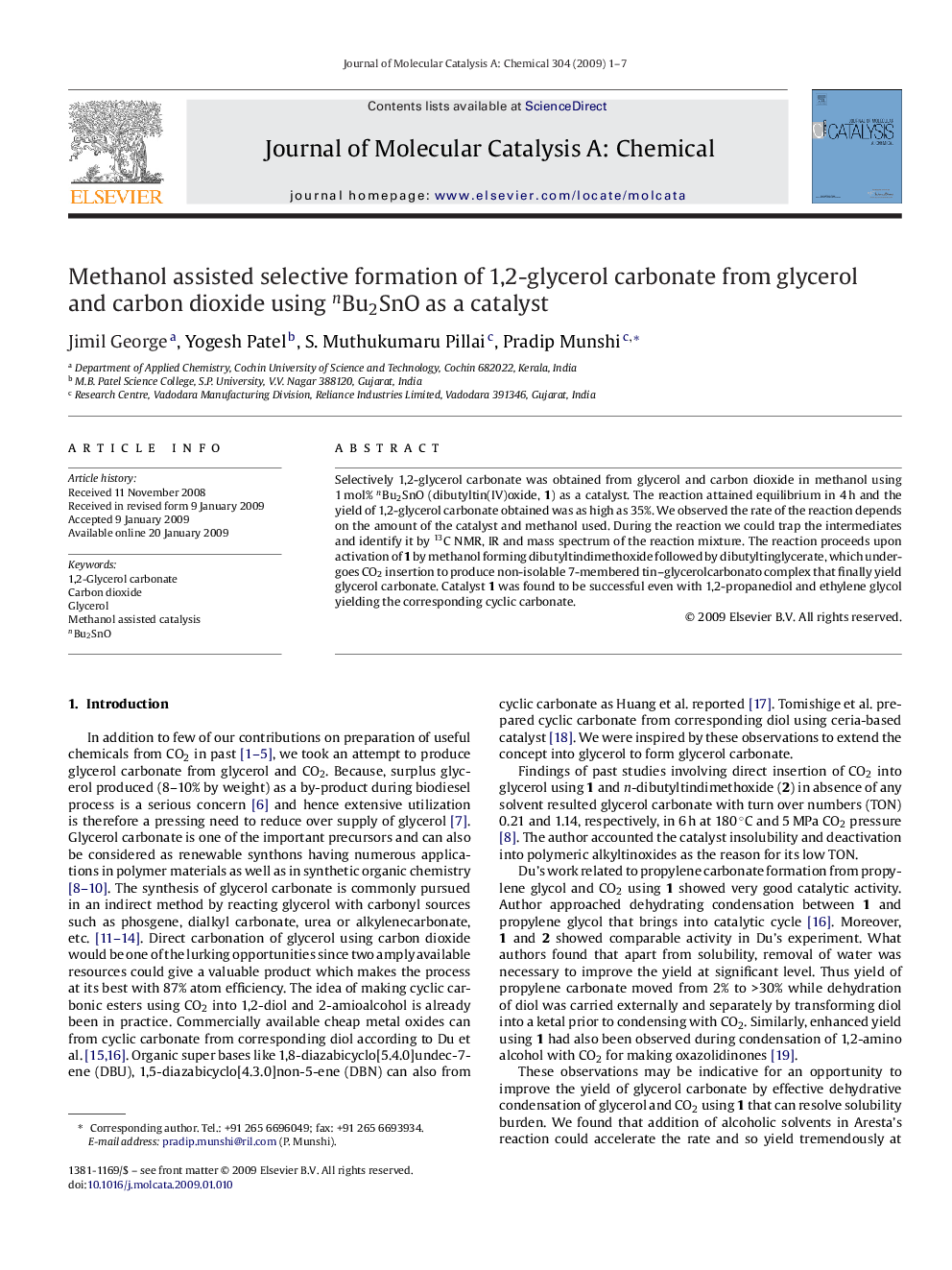| Article ID | Journal | Published Year | Pages | File Type |
|---|---|---|---|---|
| 67039 | Journal of Molecular Catalysis A: Chemical | 2009 | 7 Pages |
Selectively 1,2-glycerol carbonate was obtained from glycerol and carbon dioxide in methanol using 1 mol% nBu2SnO (dibutyltin(IV)oxide, 1) as a catalyst. The reaction attained equilibrium in 4 h and the yield of 1,2-glycerol carbonate obtained was as high as 35%. We observed the rate of the reaction depends on the amount of the catalyst and methanol used. During the reaction we could trap the intermediates and identify it by 13C NMR, IR and mass spectrum of the reaction mixture. The reaction proceeds upon activation of 1 by methanol forming dibutyltindimethoxide followed by dibutyltinglycerate, which undergoes CO2 insertion to produce non-isolable 7-membered tin–glycerolcarbonato complex that finally yield glycerol carbonate. Catalyst 1 was found to be successful even with 1,2-propanediol and ethylene glycol yielding the corresponding cyclic carbonate.
Graphical abstractSelective formation of 1,2-glycerol carbonate is observed in direct carbonation of glycerol with CO2 using 1 mol% nBu2SnO as a true catalyst in presence of methanol. The catalyst possesses turnover number of 35, much higher than literature reported stoichiometric values. Identification of the intermediates by IR, NMR and mass spectral studies lead to describe reaction path.Figure optionsDownload full-size imageDownload as PowerPoint slide
